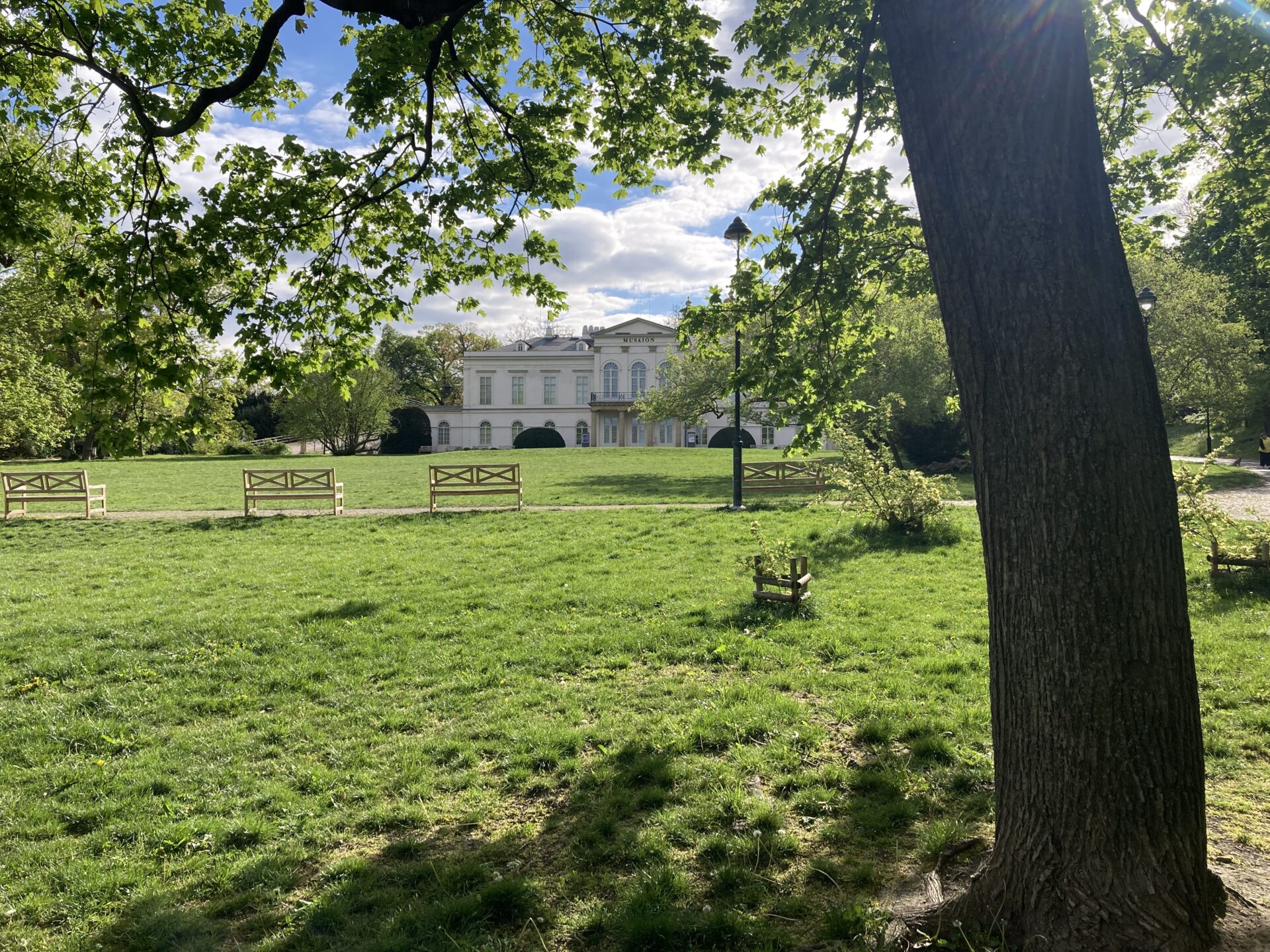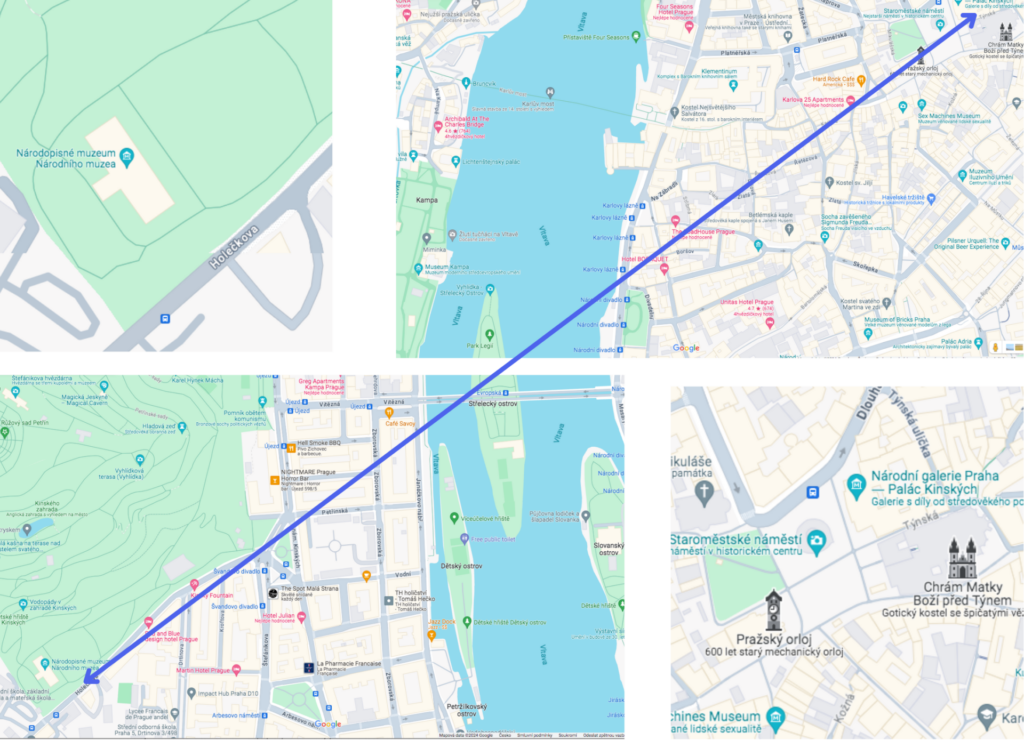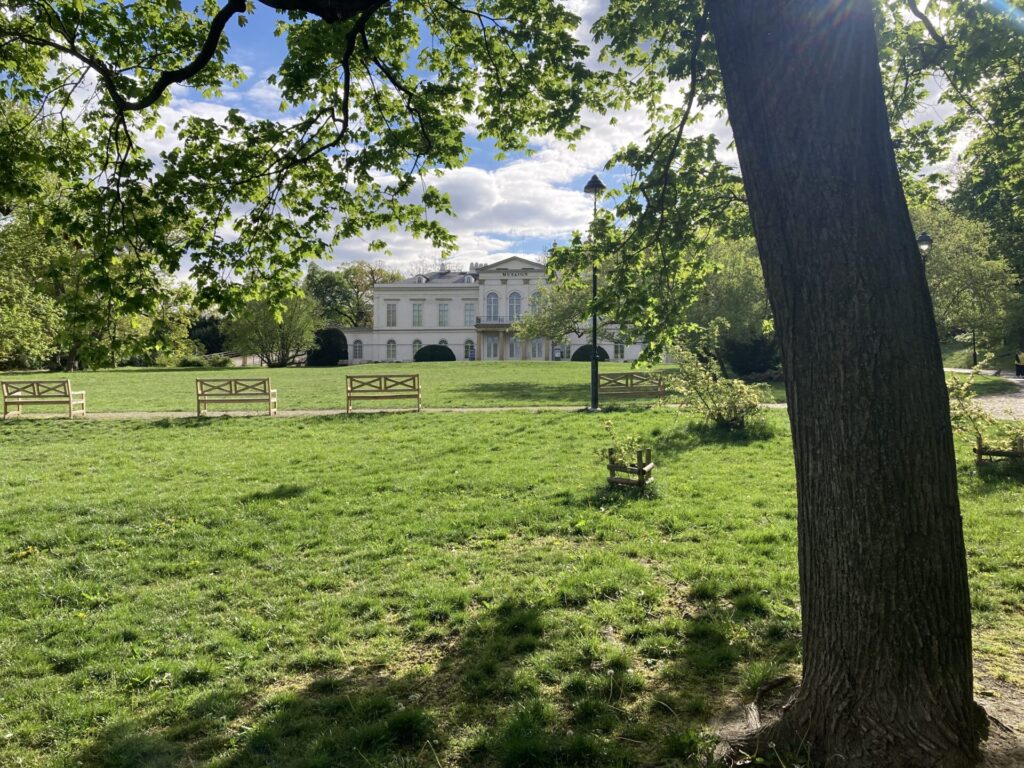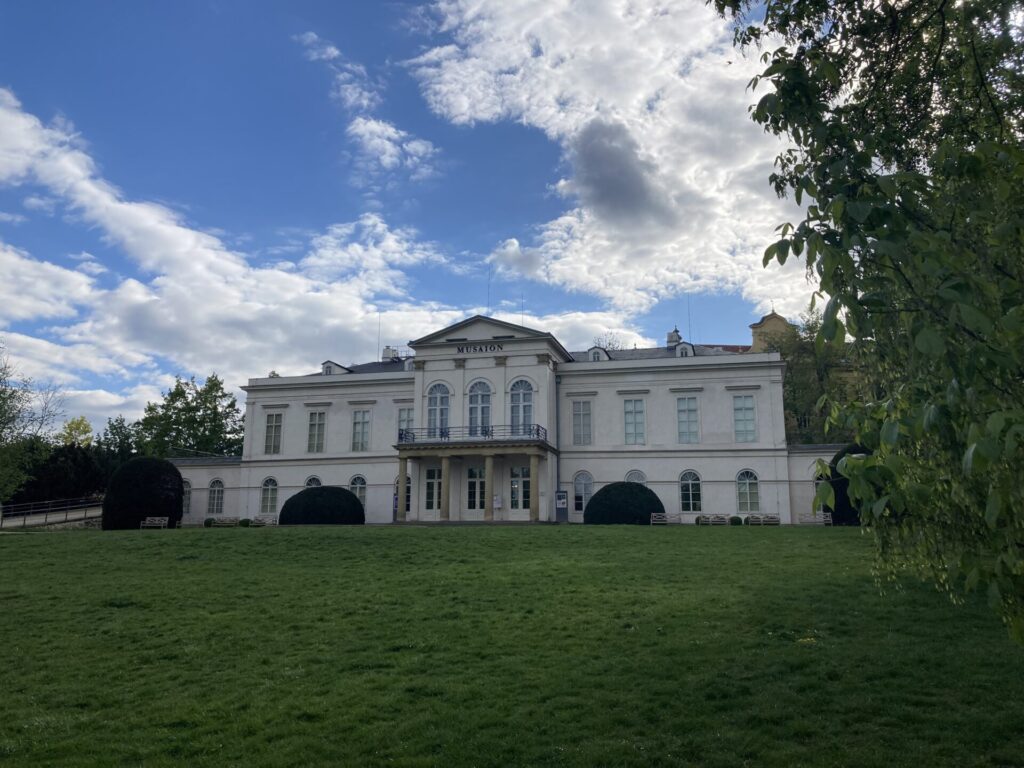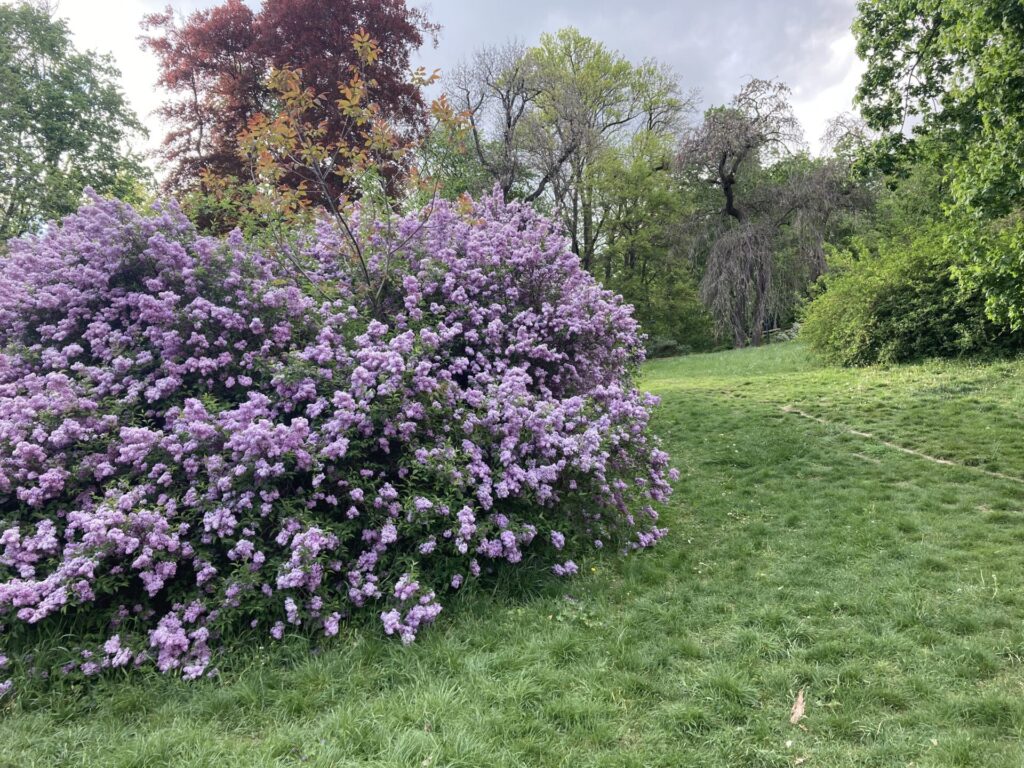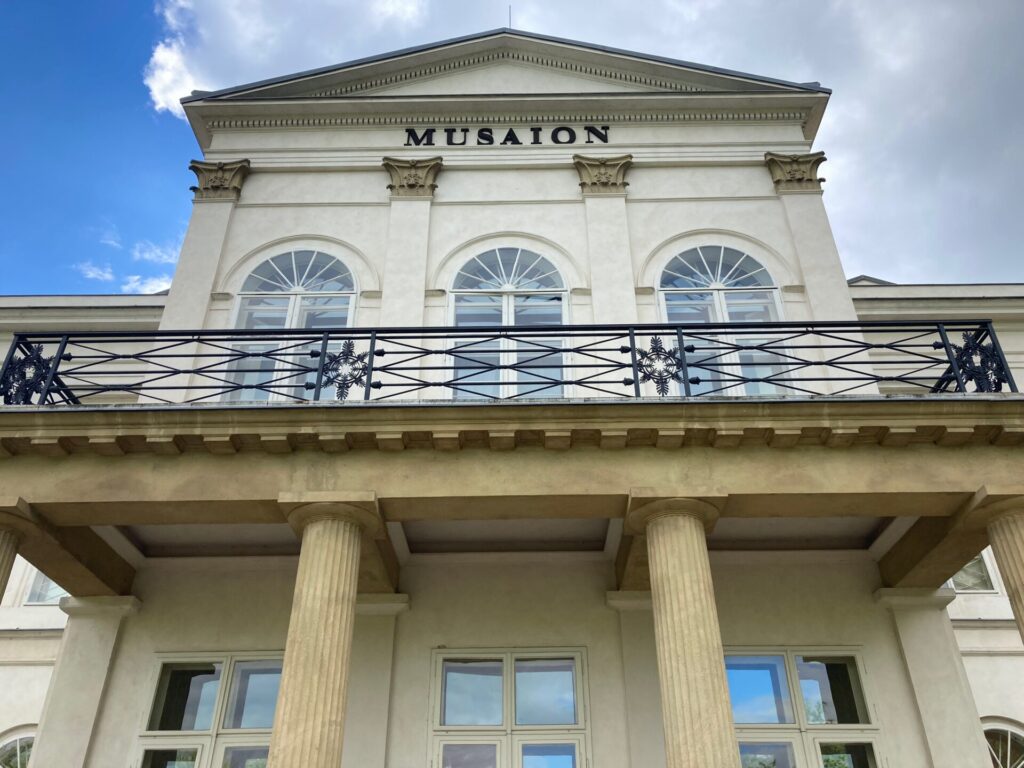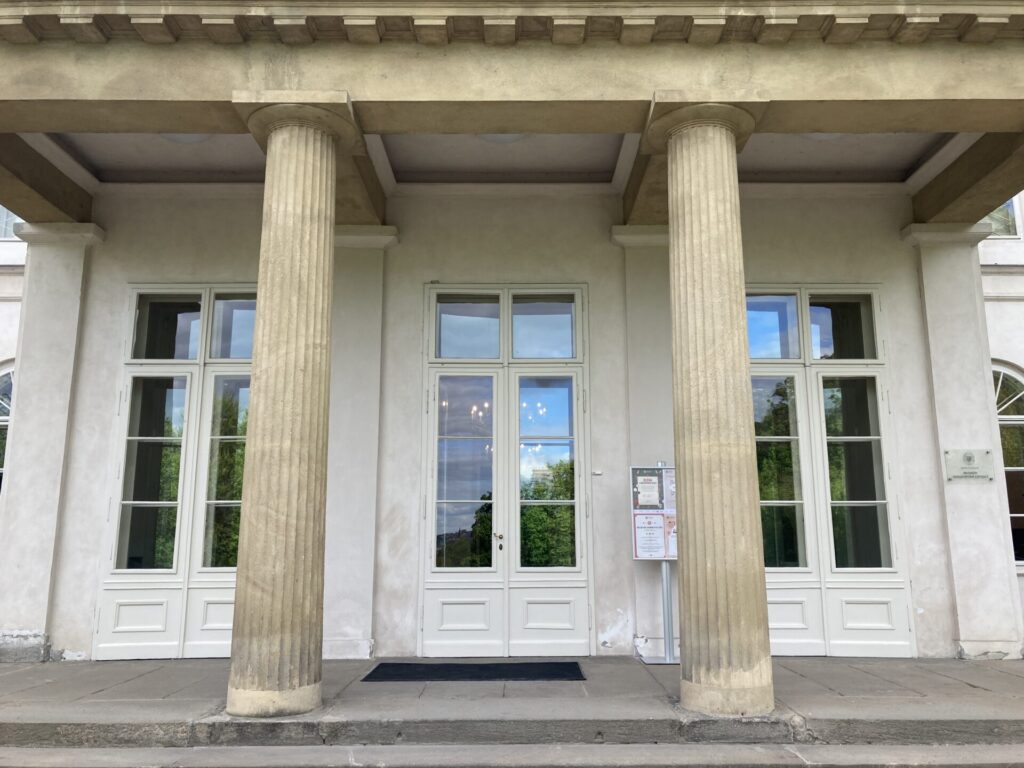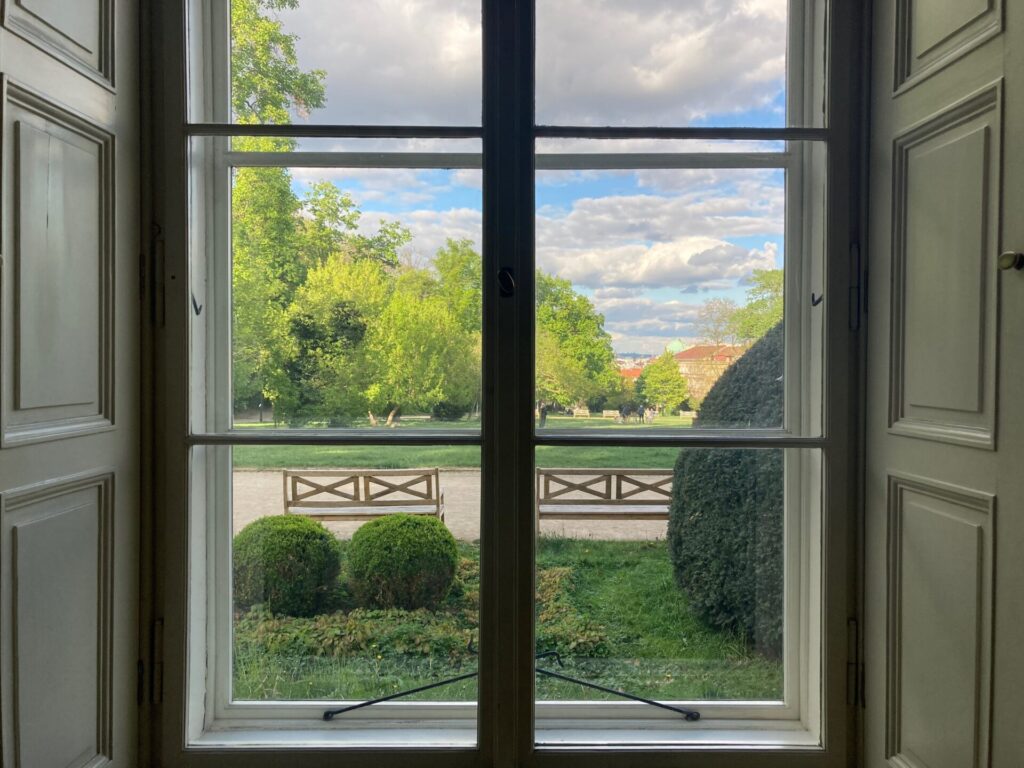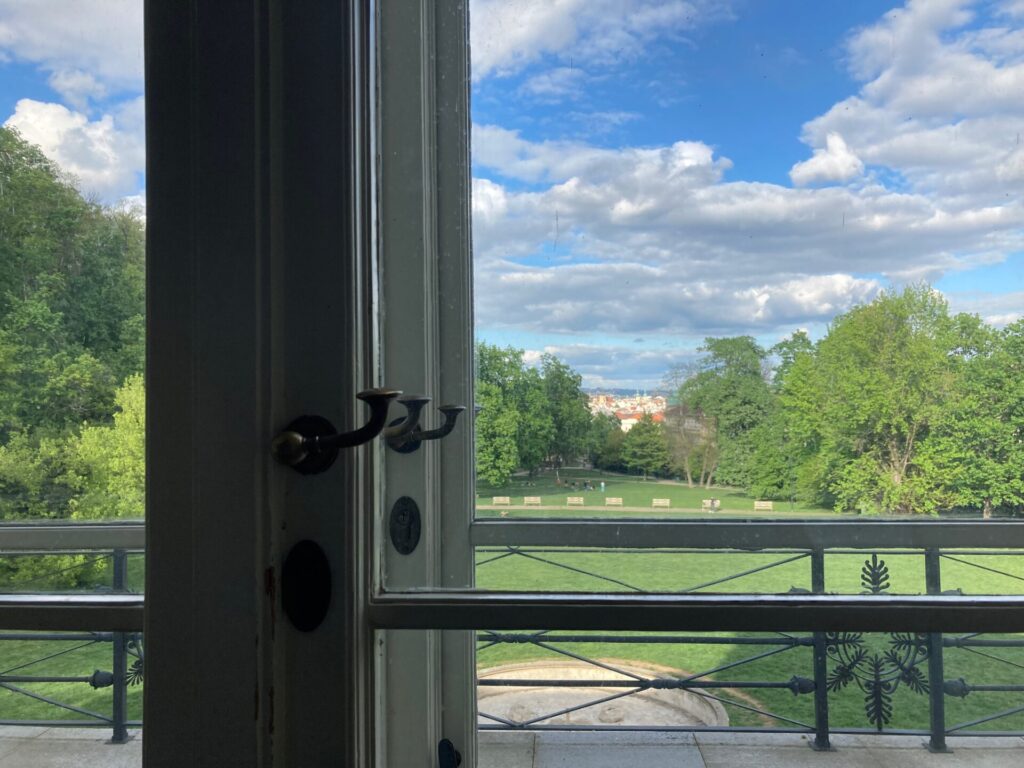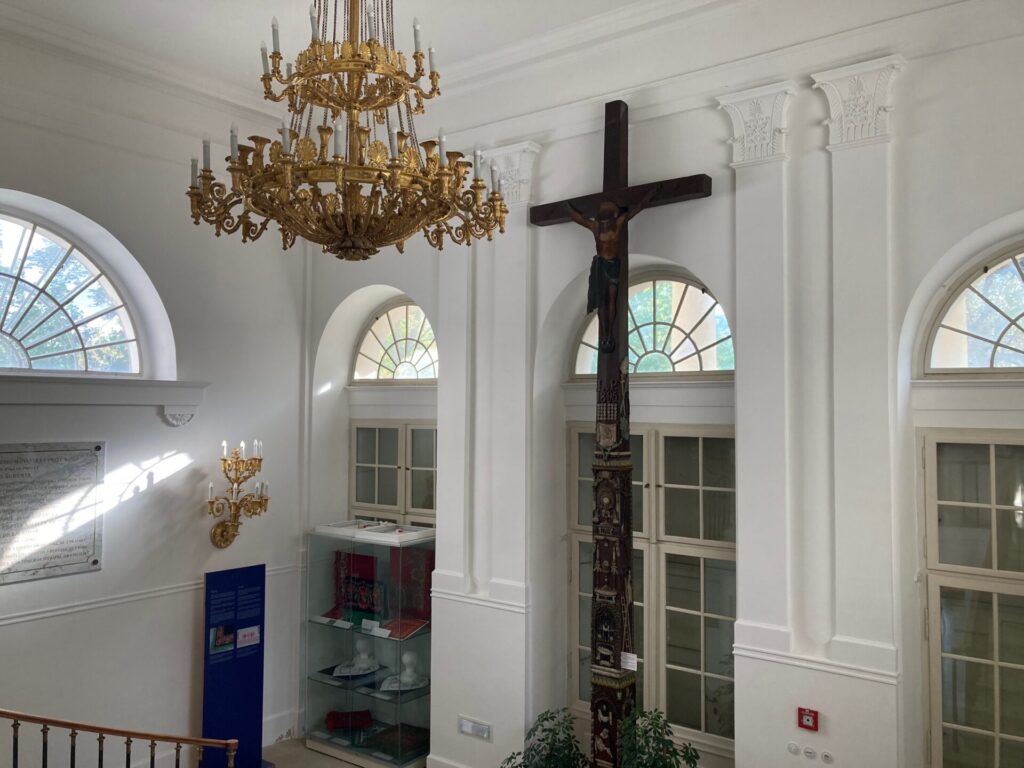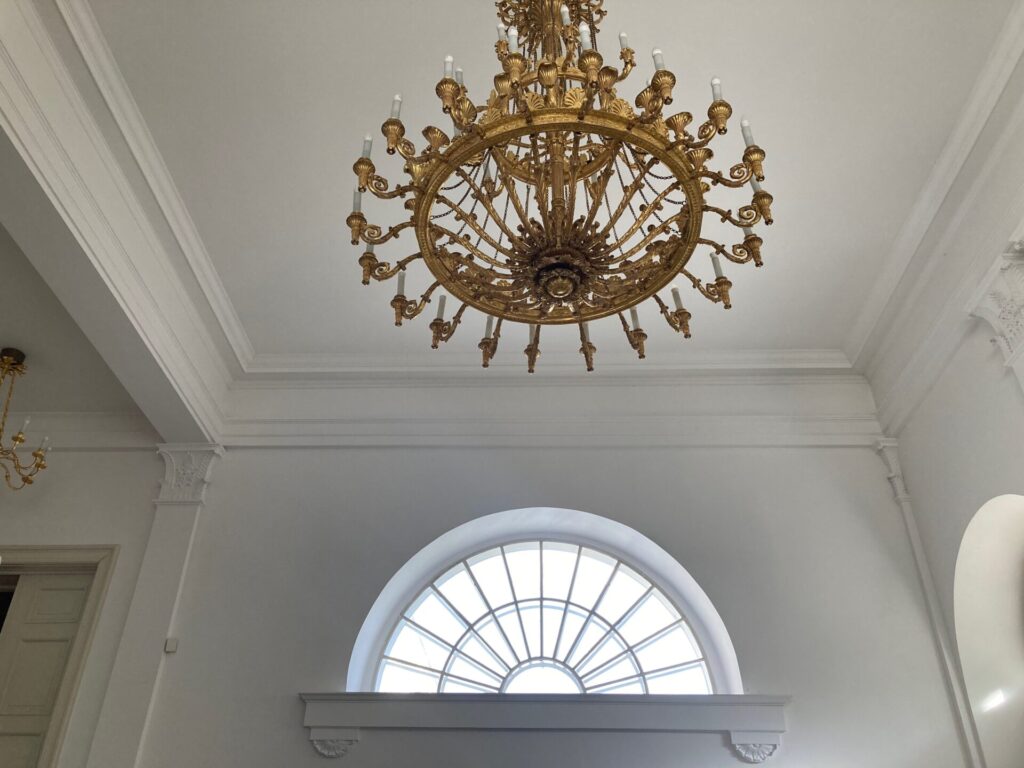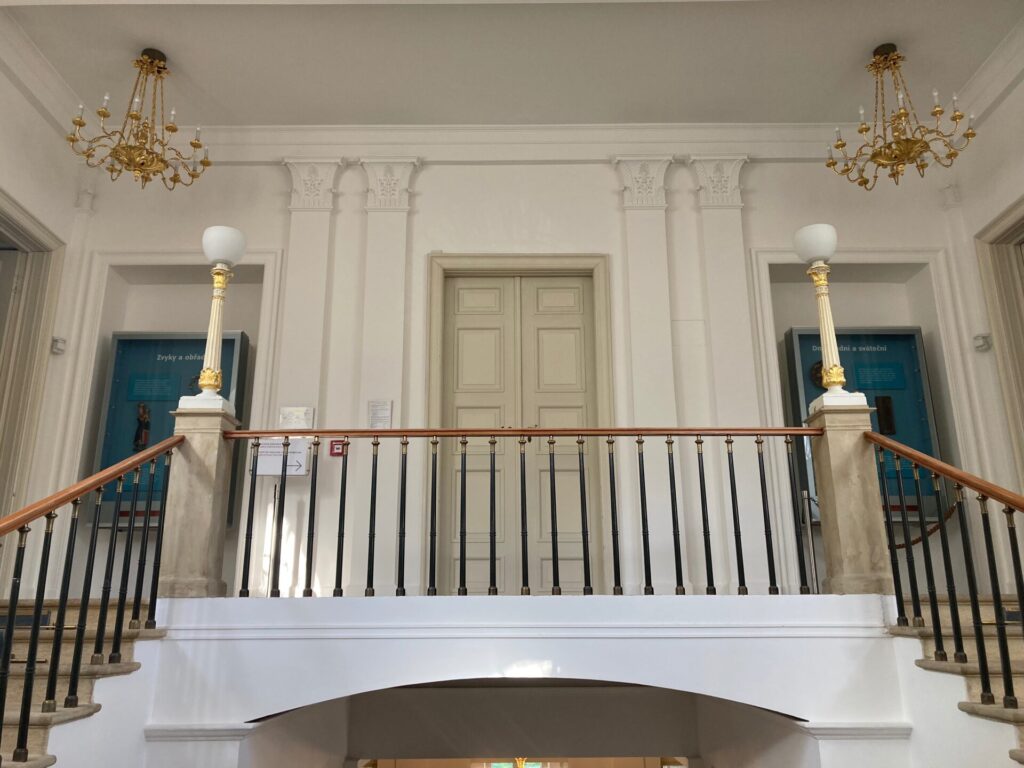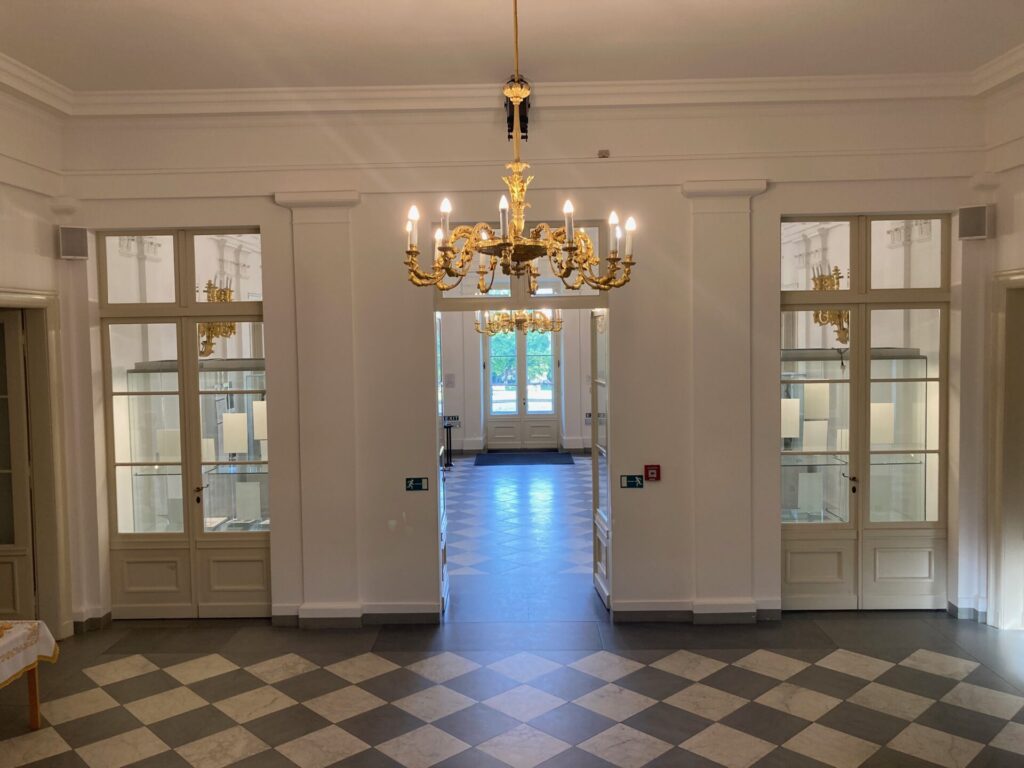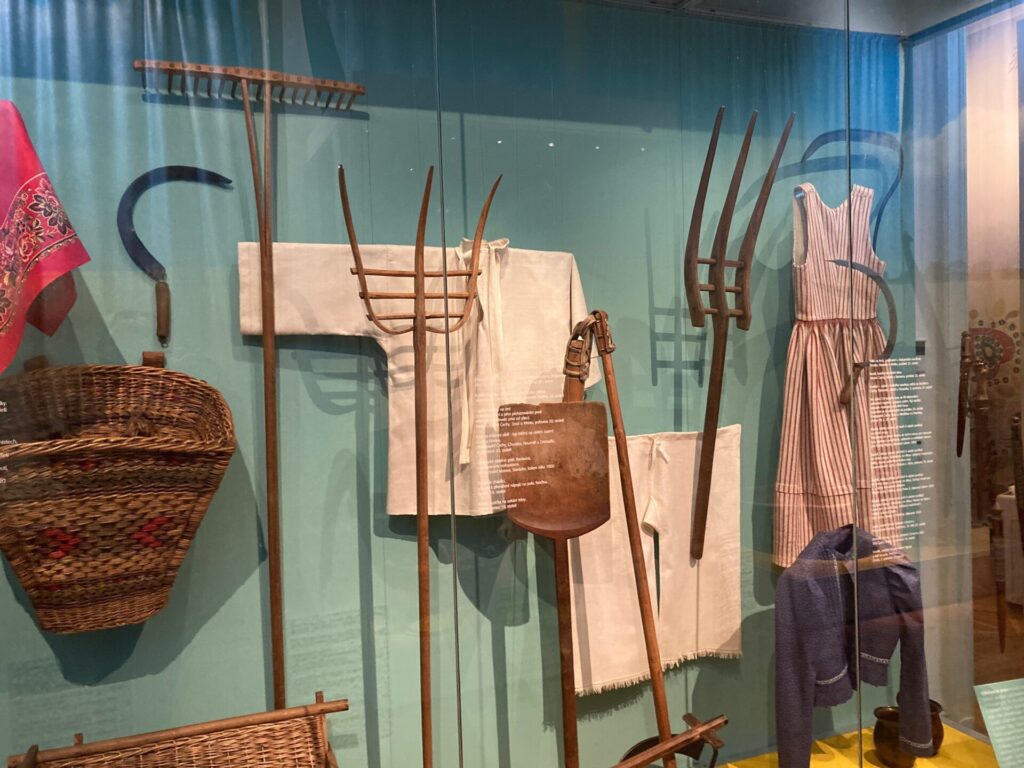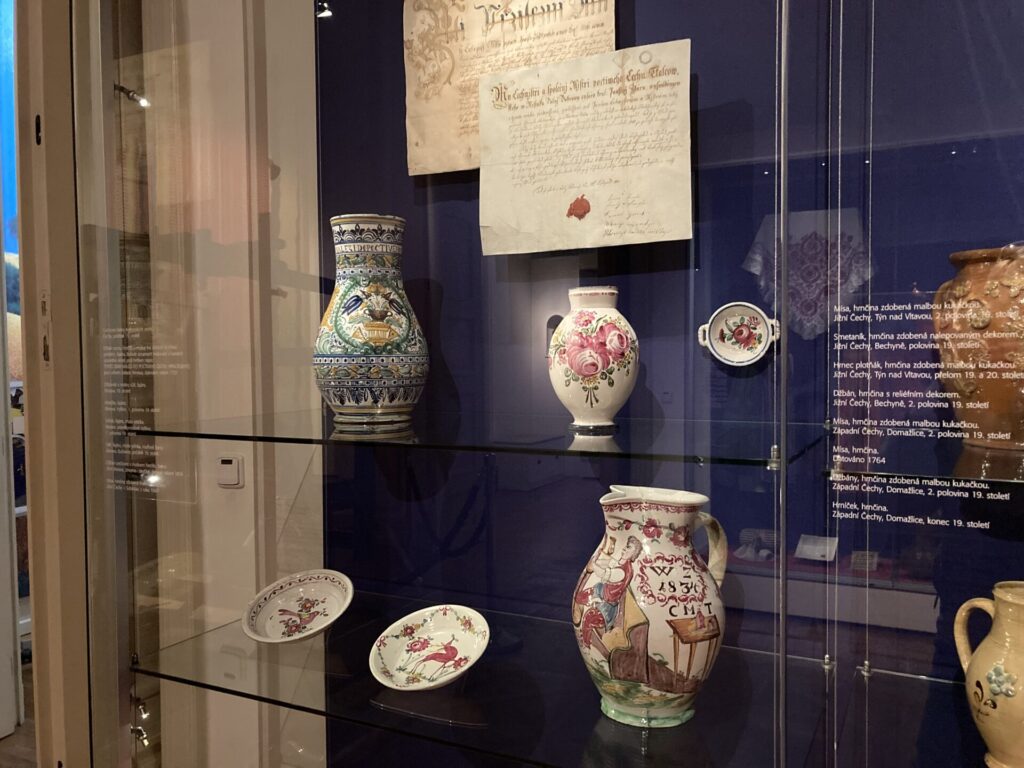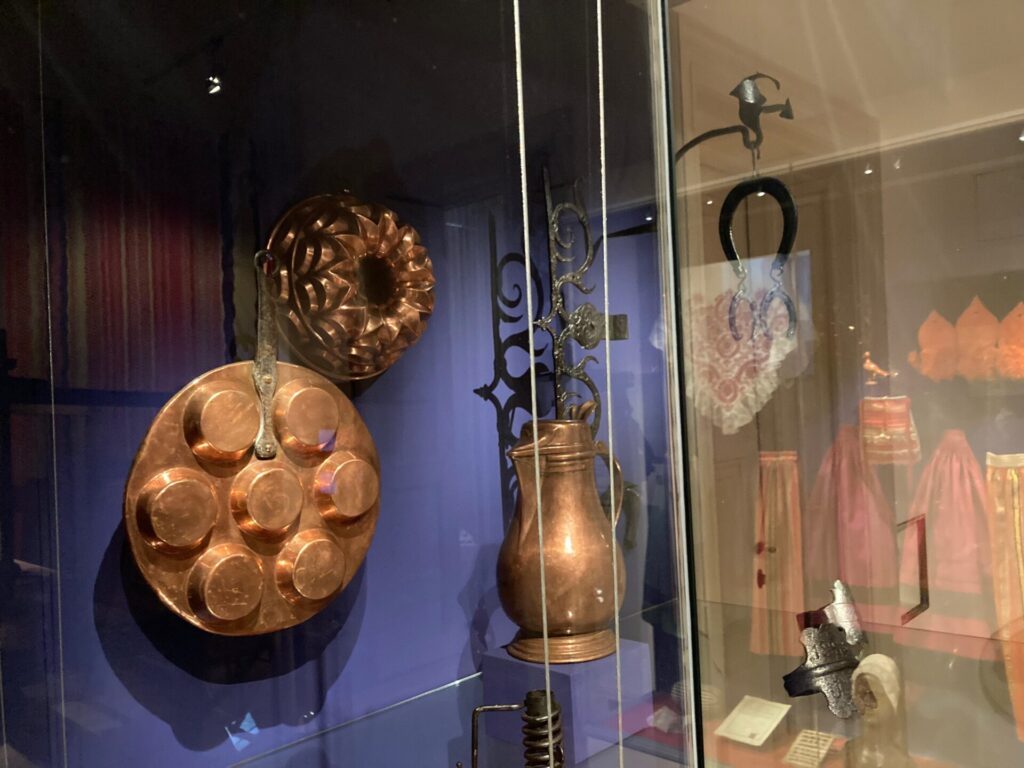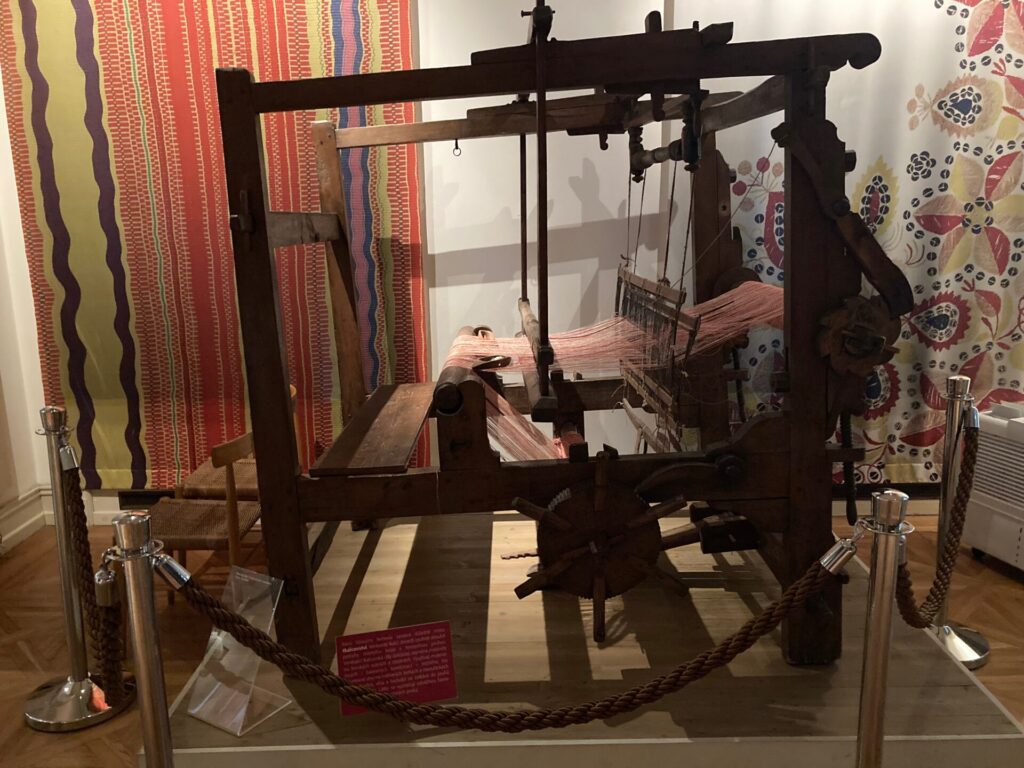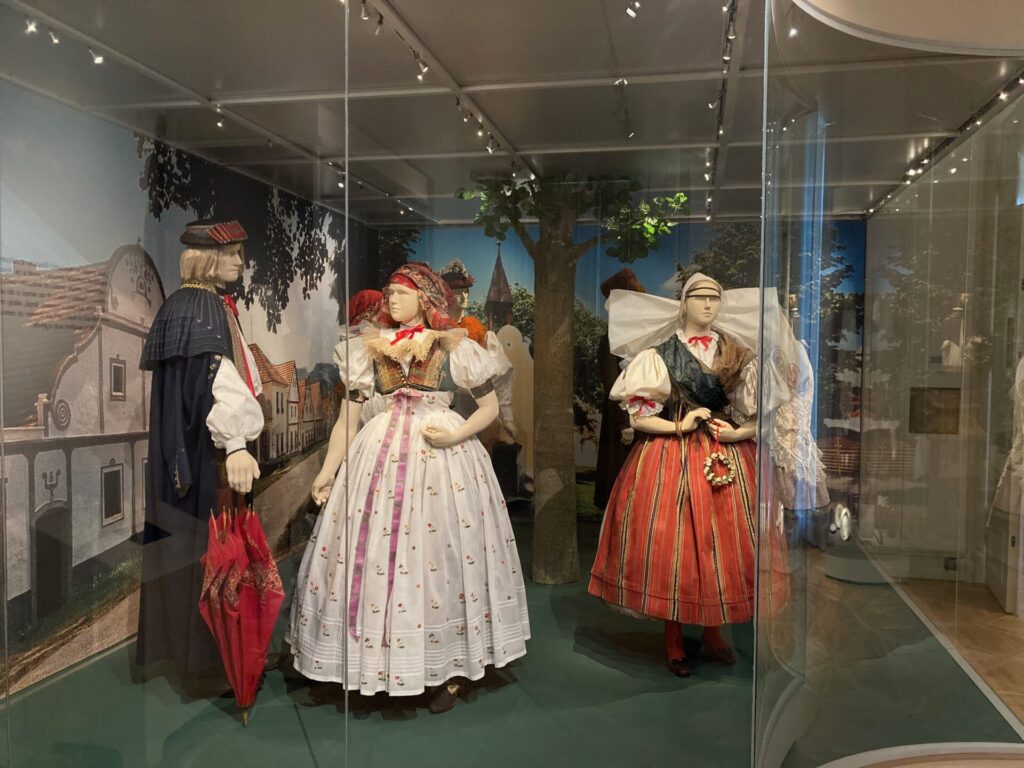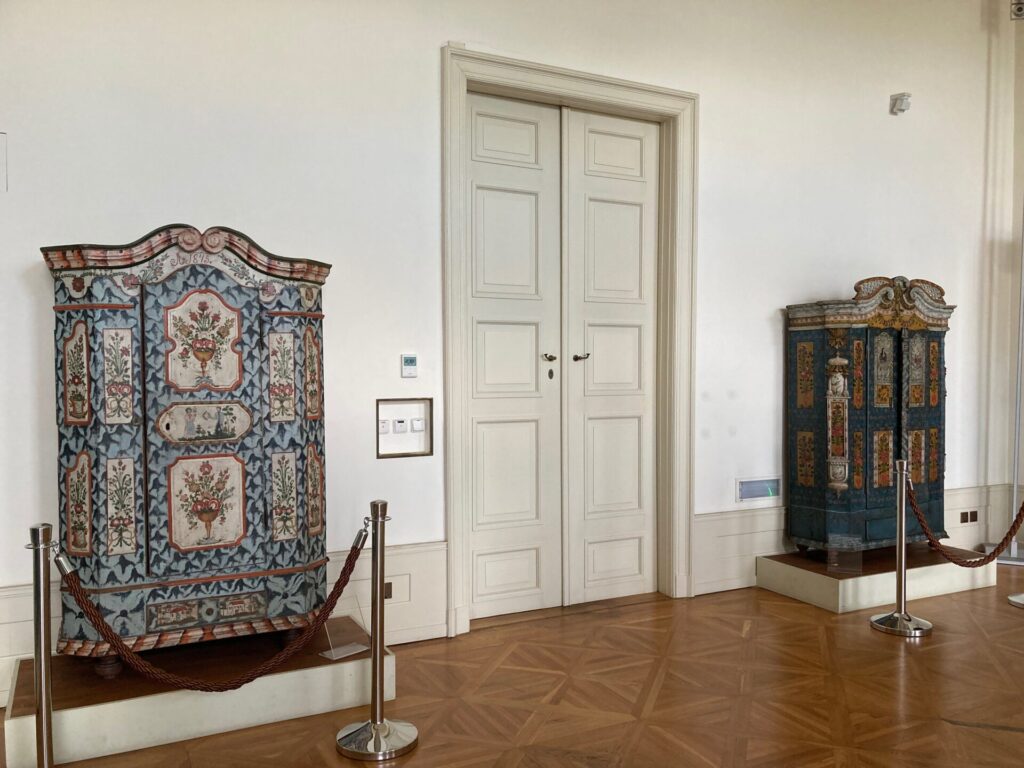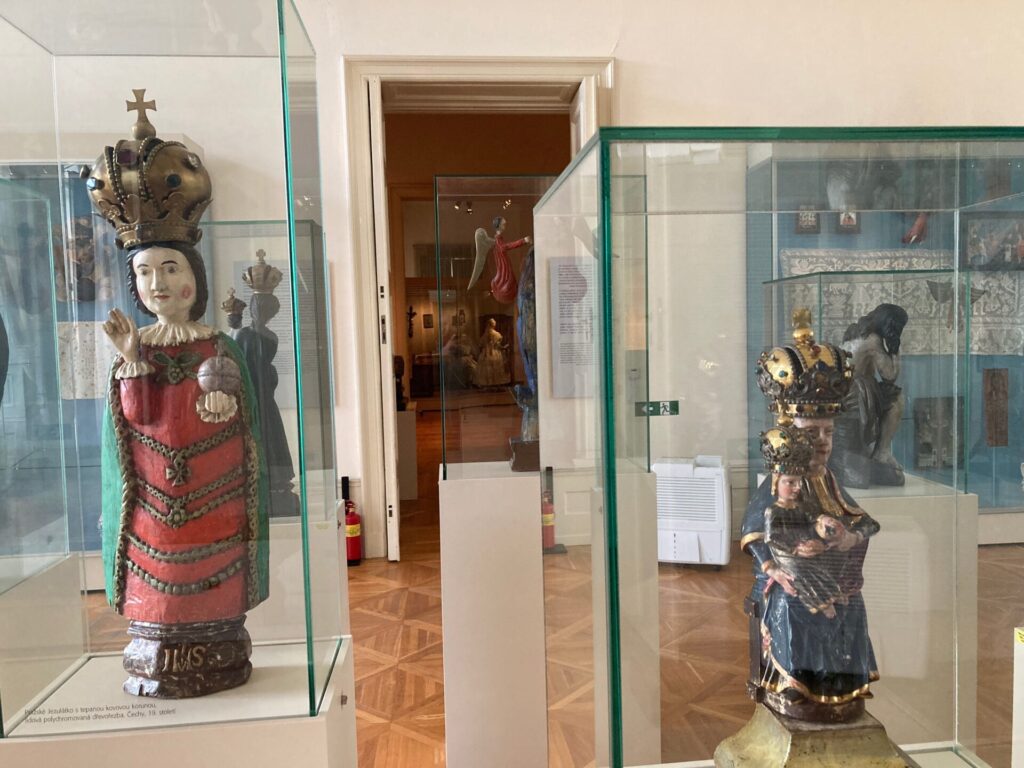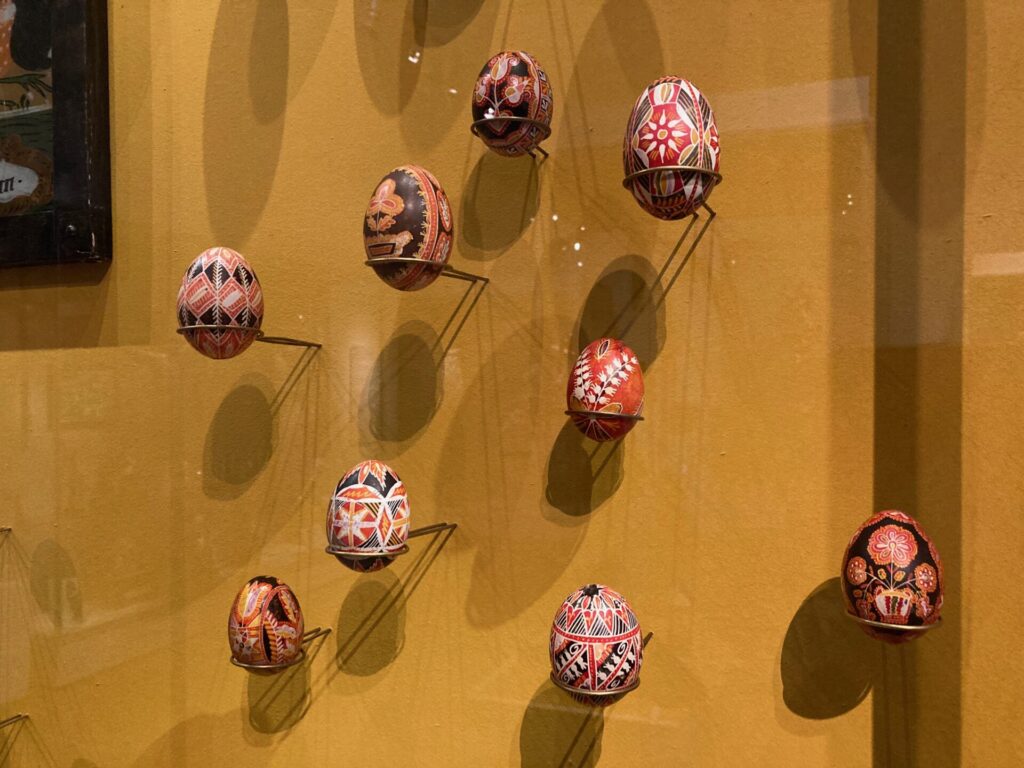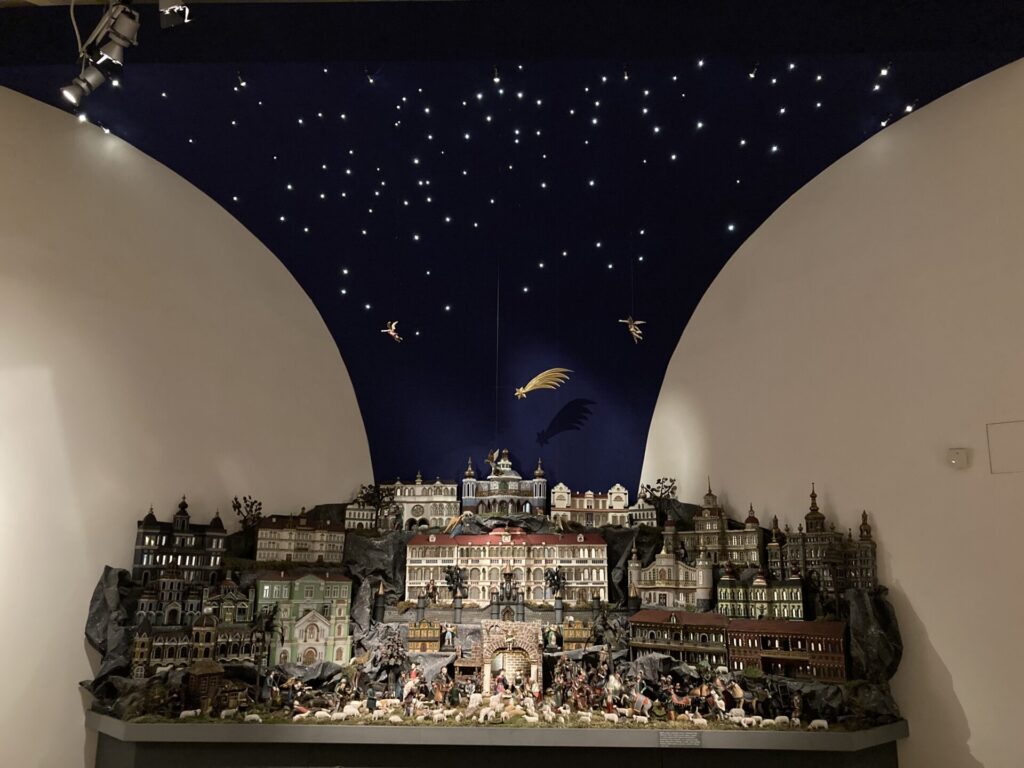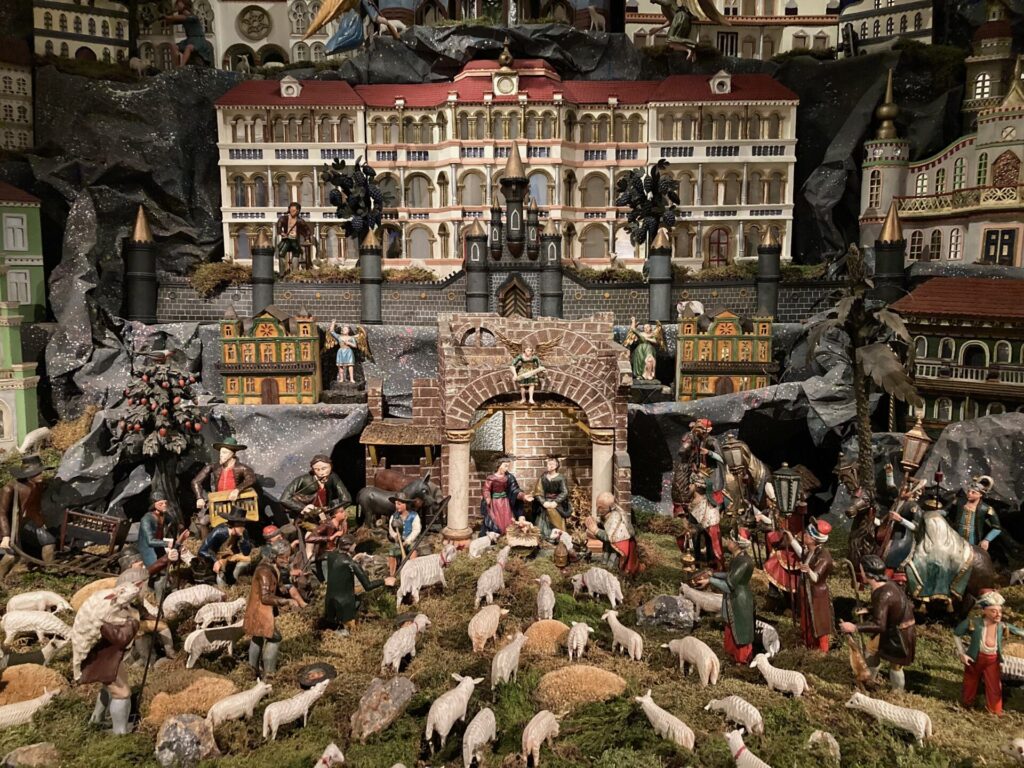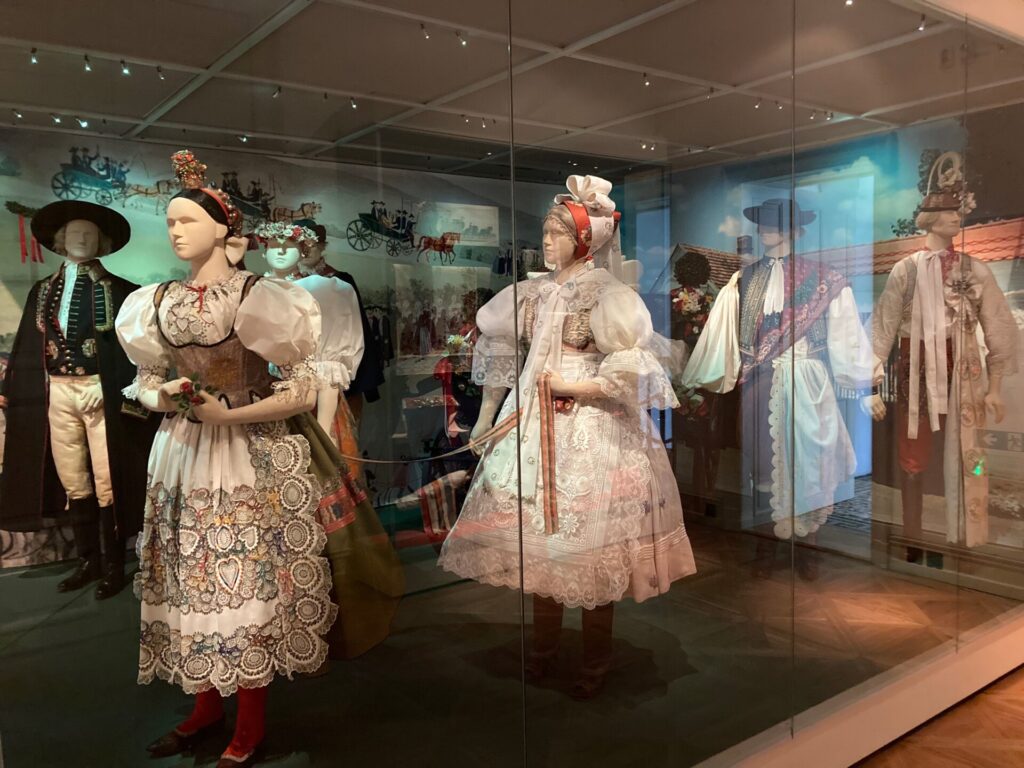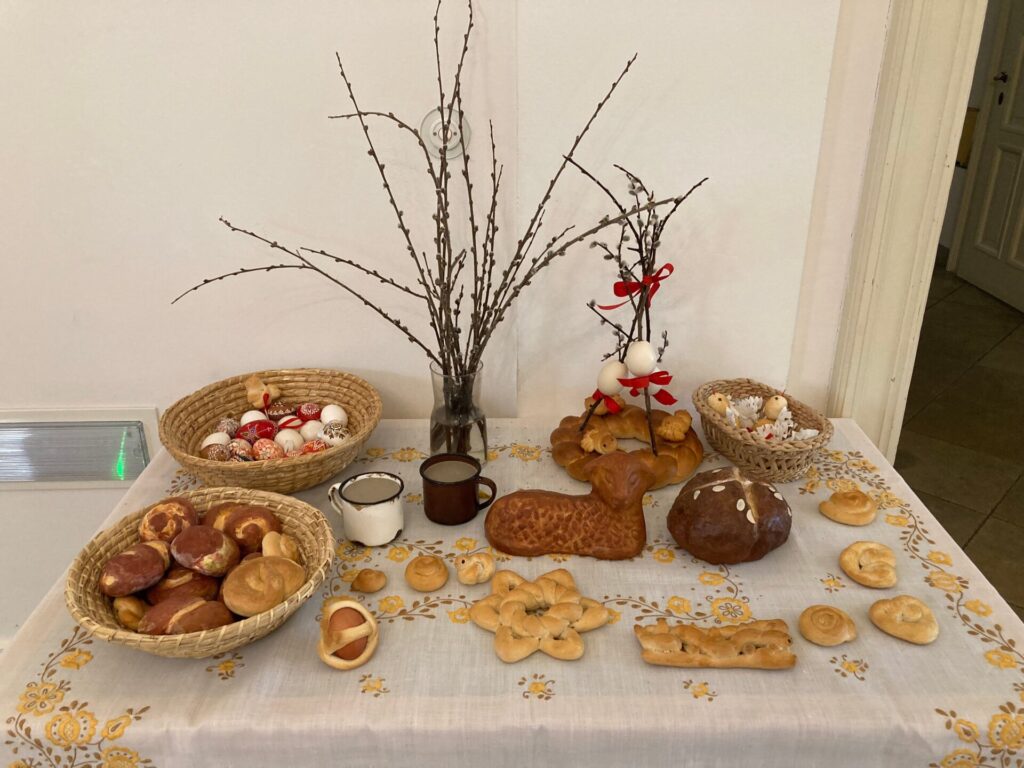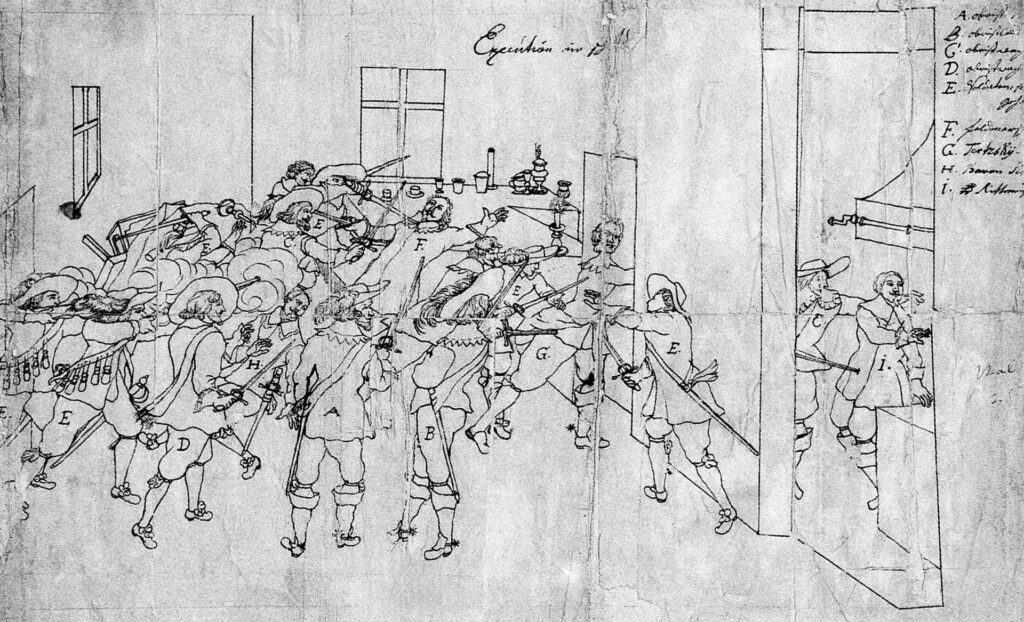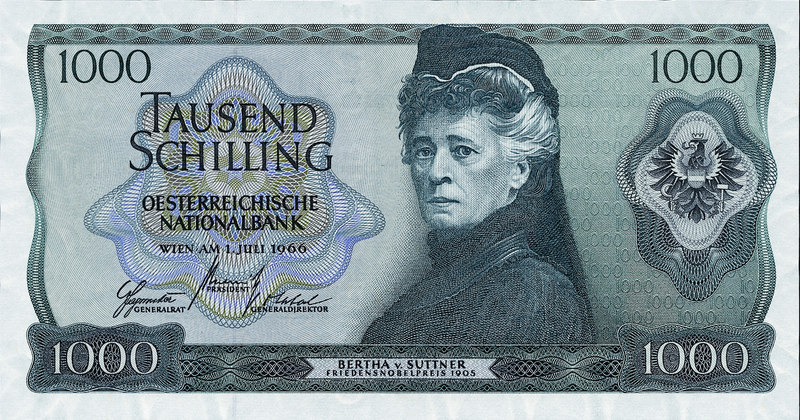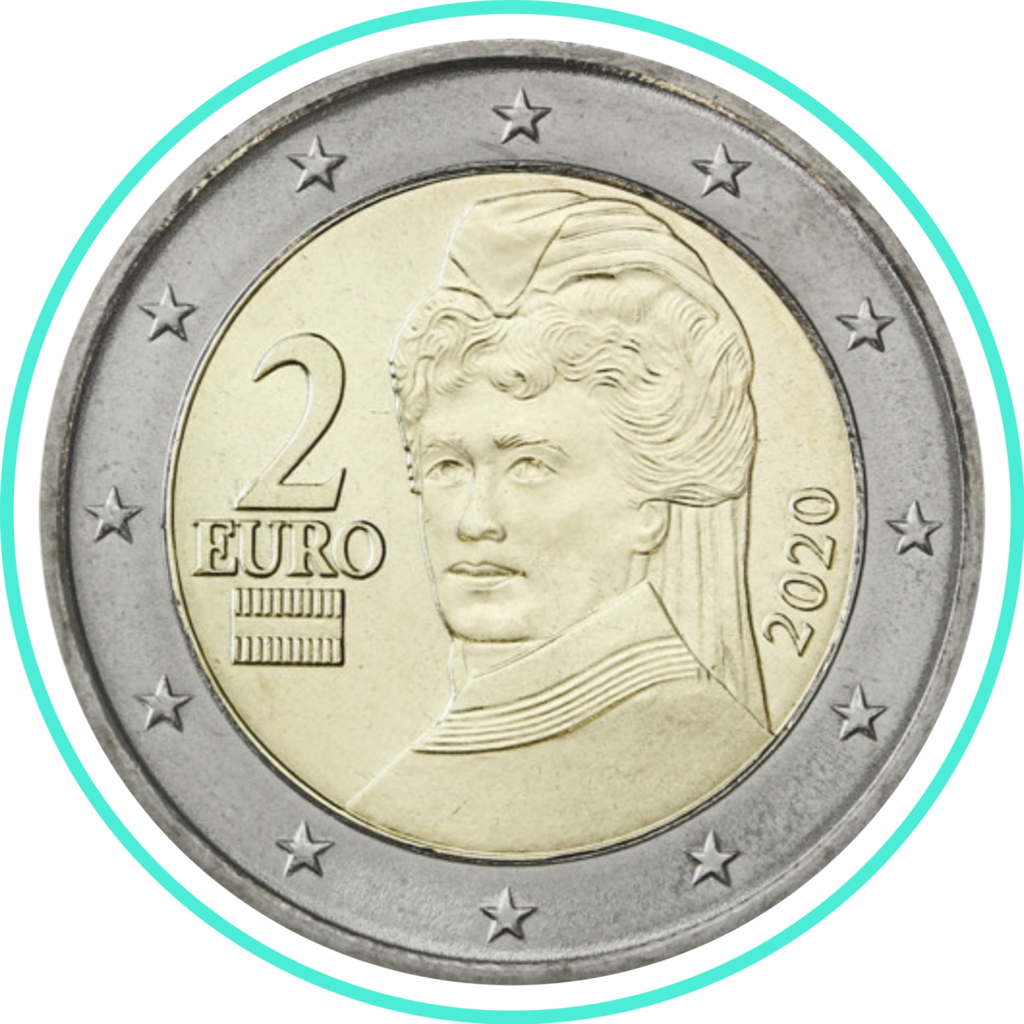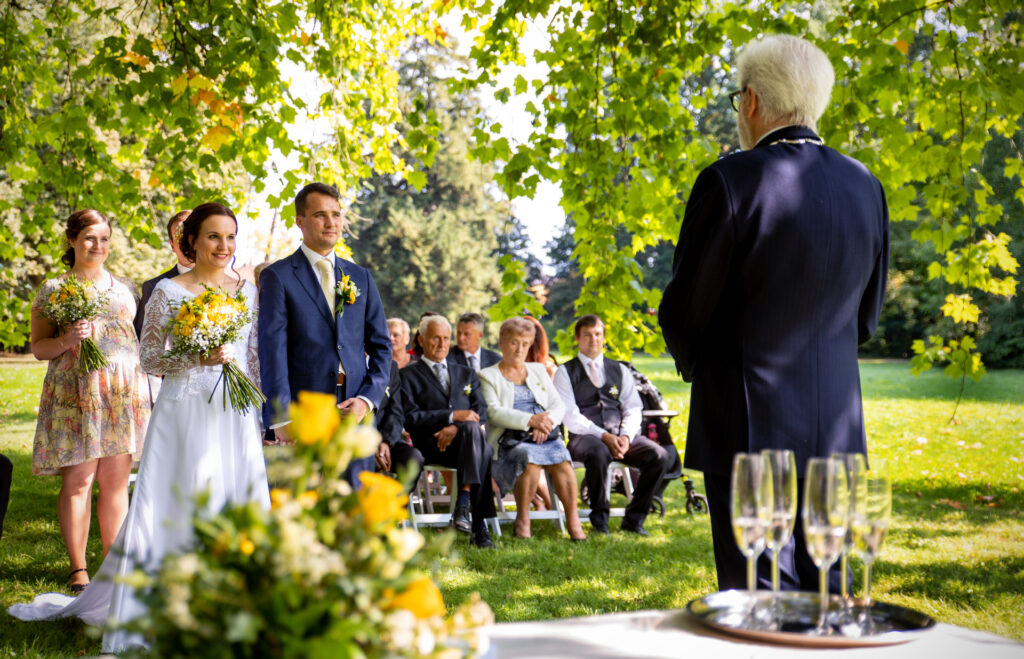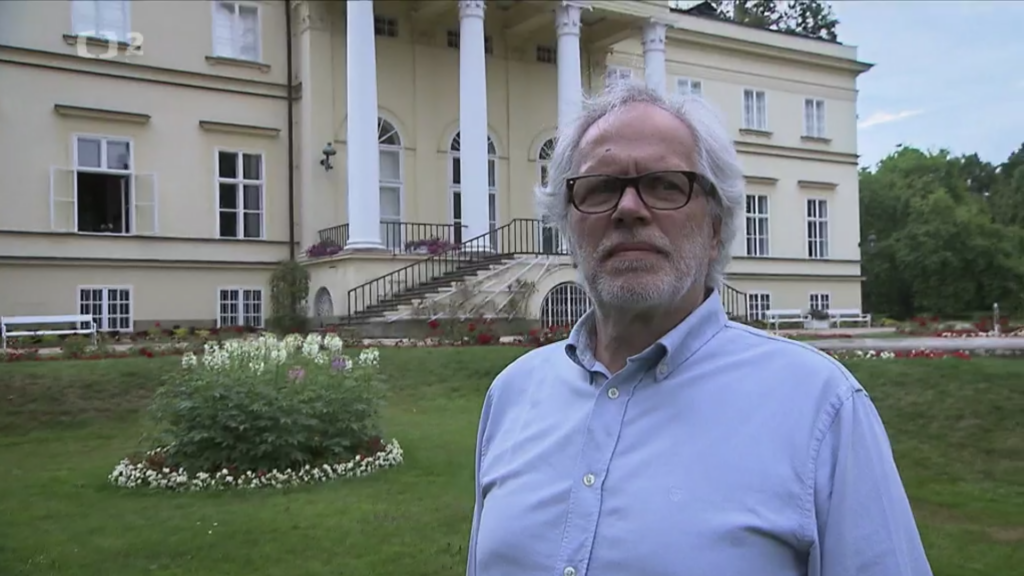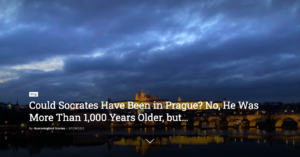If we look at a map of Prague, we can clearly see that the Kinsky Summer Palace in the Kinsky Garden at the foot of Petřín Hill was built on the axis of the Kinsky Palace in the Old Town Square. And that’s not a coincidence at all.
God – Honor – Fatherland
Although the Kinsky family’s beginnings date back to the 13th century, at least a few drops of their blood circulate in their veins even a few centuries before that, from the time of St. Ludmila, the grandmother of the patron saint of the Czech Lands, St. Wenceslas.
The ancestral motto of the noble family of Kinský characterizes them very precisely. Its members have always been great patriots, patrons of science and art, and significant national institutions.
A traditional patron was, for example, Ferdinand Jan Kinský (1781-1812), although he was only allowed a shortened life – he died at the age of 30 after falling off a horse. However, it is known that when Ludwig von Beethoven wanted to leave Vienna for existential reasons, he was dissuaded from this intention by the agreement of the Kinsky, Lobkowicz, and Liechtenstein princes that they would jointly pay him an annual annuity of 2,000 guilders. Ferdinand Jan Kinsky paid the most significant part, the entire 4/5. He was so consistent that after his death, his widow, Maria Charlotte of Kerpen, wanted to stop paying the annuity. But she had to continue because Ferdinand put this demand in his will as well.
Their son Rudolf Kinsky (1802-1836) was one of the founders of “Matica česká”, an organization associated with the National Museum and was even its first donor. Matica was founded on the initiative of the historian, František Palacký; its aim was to care for the Czech language and literature and publish books written in Czech.
Rudolf Kinský was a soldier, a diplomat, and a great patriot. This patriotism became fatal to him in a figurative sense. He was to become the highest burgrave and governor in Prague, but Prince Klemens von Metternich, the foreign minister of the Austrian Empire, of which the lands of the Czech Crown were a part of, thought Rudolf to be “too Czech”. That is why he eventually became the governor, i.e., the highest official of the state administration, in Linz. Unfortunately, he contracted typhus in the barracks there and died at the premature age of 34.
From Vineyards and Desolate Gardens to an Exhibit Suburban Villa
Initially, vineyards were on the land of the later Kinsky Garden, which King Charles IV ordered to be planted within a radius of 20 km from the city walls. In the 15th century, the land was parceled out, and homesteads were established. You can see one of them right after entering the garden. It once belonged to the blind military veteran Brabec; that’s why it was called “Brabcová.” Later, it was called Vrabcovna, apparently because “brabec” is a colloquial term for “vrabec” (house sparrow). The vineyards and gardens that belonged to this homestead occupied about one-sixth of the present-day area of Kinsky Garden.
In 1798, Marie Rosa Kinská (1758–1814) bought this land and she wanted to build an orchard there. Her grandson, Rudolf Kinský from Vchynice and Tetov (1802 – 1836), abandoned the idea of an orchard and built an English garden – a lower flat part, for the preparation of which a huge amount of soil had to be moved, and a slope covered with trees and shrubs with two ornamental lakes.
In those days, the ground on the southern slope of Petřín was “far beyond Prague”. Even so far that it was beyond the city walls. It was customary for noble families to have one or more palaces in the city center and a smaller palace or villa in the “nearby countryside”. The summer house in the Kinský Garden was supposed to fulfill this function for Rudolf’s family – that is why it is axially symmetrical with the palace on the Old Town Square, where Rudolf Kinský was born.
After Rudolf’s death, his family – Princess Vilemína Alžběta Kinská (1804–1871) and their six children – came here regularly. The son of Emperor Francis Joseph I, Crown Prince Rudolph of Habsburg-Lorraine, and his cousin Archduke Franz Ferdinand d’Este were also frequent guests here. (As fate would have it, both would become heirs to the throne, and neither of them became rulers. Rudolf shot himself in his thirties, and an assassin in Sarajevo shot Franz Ferdinand.)
From the Hole in the Hunger Wall to Folk Costumes and Dances
The Kinský Garden is not located in the territory of the historical center of Prague within the city walls. However, as the city grew and the walls and city gates were demolished, the garden was suddenly in the city’s center. Prague expanded in all directions, including the direction upstream of the river where there was a suburb of Prague called Smíchov.
It was in Smíchov that a number of factories were built during the Industrial Revolution, and a workers’ quarter with tenement houses was quickly built for the new workers who came from the villages to the cities. The tranquility of the suburban classicist villa was gone. After Vilemína’s death, the family wanted to sell the land as plots for new houses, but the city opposed this and bought the summer house and garden and made it available to the public. A pedestrian gate was pierced through in the Hunger Wall, and the Kinský Garden was thus connected to the gardens on Petřín.
The summer house came to be called Musaion because it became the seat of the Ethnographic Museum. Later it turned into a permanent exhibition of the ethnographic department of the National Museum, one of the largest collections of folk art and culture of the 17th to 20th centuries in Europe.
Exhibitions, workshops, and various events are held here, and whole classes of primary school students come here and have to visit the museum to supplement their lessons. You can spend the day here in a ceramics course, or come to practice yoga, or come to see a demonstration of folk crafts. You can come to see short-term thematic exhibitions or view permanent exhibitions – and when you come home and show your family the photos, your grandmother will remember that these are precisely the things her grandparents had at home.


The name Kinský developed from the medieval German transcription of the original name Wchynsky, or Vchynský of Vchynice. That’s the village’s name near Lovosice, where the Vchynský landowners had a fortress. Then, it was also written as Chynský. It was not until the Thirty Years’ War that the transcription to the form Kinský or Kinski began to be used. The first bearer of the name written in this way was Count Vilém, who was murdered together with Albrecht of Wallenstein by conspirators in Cheb.
In 1843, Berta Kinská – Suttnerová, the most famous woman of the Kinský family, was also born on the Old Town Square. She once answered an ad saying, “A solvent gentleman from Paris was looking for a secretary.” The ad was placed by the wealthy industrialist Alfred Nobel, who said at the time: “A secretary who speaks three world languages and can type on a Remington typewriter is a miracle.”
Berta Kinská-Suttnerová won the Nobel Peace Prize in 1905 as the first woman in the world. However, it is paradoxical that a woman who dedicated her whole life to peace died a month before the outbreak of the First World War. (The war that was started by the assassination of Franz Ferdinand d’Este.)
František Palacký (1798-1876) was a Czech historian, writer and politician. His most significant work is the five-volume book History of the Czech Nation in Bohemia and Moravia. His authority was such that in 1868, he knocked on the foundation stone of the National Theatre. Since then, he has been, in general, known as the “Father of the Nation”.
František Palacký’s portrait is also on the Czech thousand crowns note. This is called in slang a liter (because the volume measurement of one liter has a thousand milliliters), a plate, a tray, a rag, or a stick. But also Palacký or Smetana (composer Bedřich Smetana was on the former thousand crowns note). That’s why you can also get the answer to the question of how much it costs: two Palackýs.
In Kostelec nad Orlicí (140 km east of Prague), there is a castle that is the spitting image of Kinský Summer House. No wonder both buildings were designed by the same architect, Heinrich Koch, and he did it at the owners’ request. The castle owner in Kostelec is the most famous member of the family today, František Kinský. He is known in Kostelec not only as the owner of the castle and co-owner of the Kinský Brickworks there, or because he was the town’s mayor until recently. (He also married couples at the Kostelec castle, and whether it was in the castle salon or the castle park, he told them: “I welcome you to my home / my garden.”) But also because the castle is open to the public – there is a gallery on the first floor, various cultural events are held there, and on the castle’s ground floor is the Museum of the town of Kostelec nad Orlicí.
František Kinský is known throughout the Czech Republic as the guide of a very successful Czech TV series. The series was called Blue Blood and told the stories of individual noble families. All those stories have their dark forty-year period. After the communist putch in February 1948, all property of noble families was confiscated, everyone was persecuted, and many were expelled from the country or imprisoned. A Research Institute for Pig Breeding is set in the Kostelec castle. When the family got it back after the Velvet Revolution in 1989, the castle was so devastated that it was in danger of collapse.












